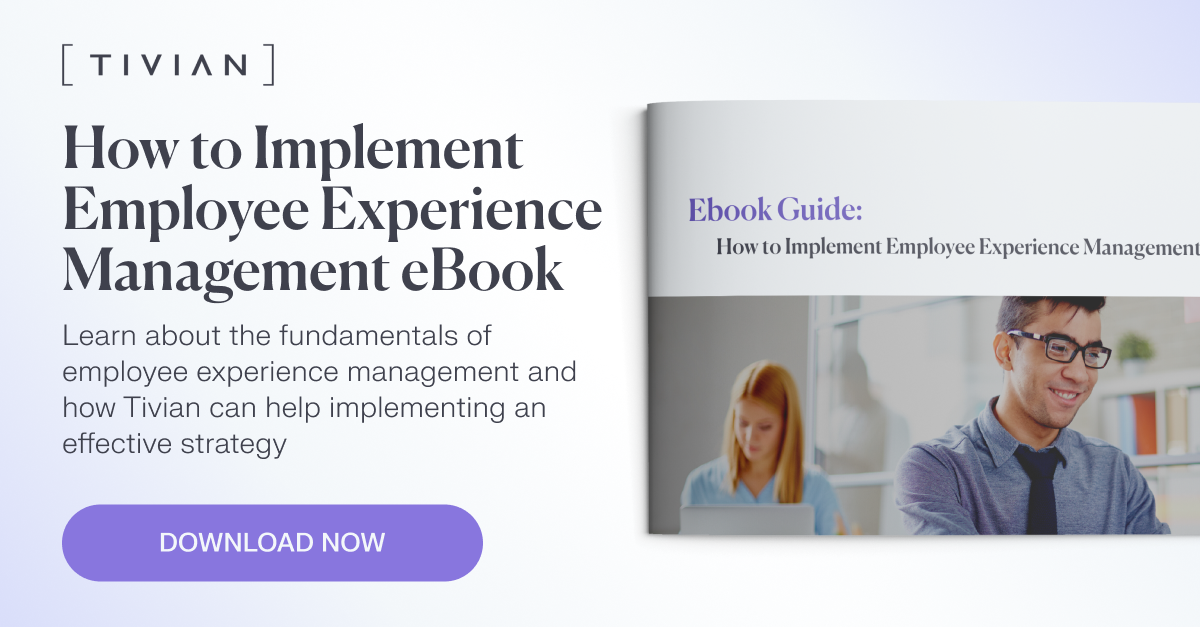Employee feedback is commonly gathered as part of annual surveys but its true value should be recognized and leveraged more effectively, as the opinions and feelings of your staff are hugely influential for your company’s culture, employee experience and, ultimately, success. Feedback tools help HR teams to be more proactive and strategic. We explore the best use cases for implementing an employee feedback platform.
Why should HR teams implement an employee feedback platform?
There are various reasons for using an employee feedback platform, from time-saving and efficiency benefits to insights and analytical possibilities offered. Overall, leveraging feedback tools give HR teams greater scope for improving employee engagement.
How can an employee feedback platform impact employee retention?
In an era of work where loyalty is hard to gain or guarantee from both sides of the employee-employer relationship, attracting and retaining top talent is difficult. Developing a workplace environment that’s engaging, inclusive and empowering should be a top priority. An employee feedback platform can play a key role by helping you efficiently gather feedback and gain meaningful insights to improve your company culture and employee experience.
A 2021 isolved report revealed that 92% of HR leaders set employee experience as a top priority.
The best use cases for an employee feedback platform
Although the main objective of gaining employee feedback is to identify what your company (and its people and processes) is doing well, where it’s underperforming and how it can address issues and make improvements, an employee feedback platform can be used for a range of purposes in various scenarios, to feed into employee engagement and experience optimisation. Below we’ve outlined our 10 top use cases to consider.
1. Introducing new software
In today’s ever-changing world of work, digital transformation is rife. From moving processes and operations to the cloud to accommodating a hybrid working model, companies are continuously updating their tech stacks and introducing new software. And this can be a disruptive time, as staff get used to new tools and technology, and different processes. Encouraging employee feedback about new software can make the transition smoother and identify potential issues or risks, or where reassurance or alignment may be needed.
2. Change management
Changes in technology can create uncertainty over jobs or how roles will be affected or adapted. Change needs to be managed delicately but efficiently. Gaining feedback about technological, departmental or hierarchical change, as a result of leadership decisions, can inform project management, personnel decisions and where staff communication could be clearer.
3. Temperature checks of employee engagement

Many employee feedback platforms and survey tools give HR teams a quick and easy way to gain insights and updates on employee satisfaction at any time. These are usually in the form of “pulse surveys”, for regular temperature checks on the feelings amongst the workforce, with numbered scales for questions and, where necessary, text fields for accompanying detail.
4. 360 feedback
To engage employees in this hybrid world of work, managers need to pay particular attention to developing soft skills such as empathy, compassion and humility. A 360 feedback process enables managers to build self awareness and better understand their strengths and areas for improvement.
5. Project, campaign or event management and optimisation
Feedback on how well a project or campaign has been run, or maybe how an event has gone, can offer teams key learnings for future activities. You can leverage tools to automate surveys and invites for feedback, with responses being collated and data being gathered seamlessly.
6. Recognition and development
There are employee experience tools that enable employers to gather and analyse quantitative and qualitative feedback from within the organisation about individuals’ performance in line with company goals, values and team/role competencies, which can be used to recognize skills, achievements and proficiency of staff members (including via peer praise), track progress and steer development.
7. Inclusion and diversity initiatives
In a fast-evolving workplace culture, prioritising diversity and inclusion is a must. Are you fostering a working environment that promotes tolerance and equality? How well are you doing compared with other companies in your sector?
Collecting demographic intel, doing market research and carrying out internal surveys will inform your diversity and inclusion initiatives. Leverage feedback tools to reveal whether certain departments are too homogeneous and in need of diversification and where you have gaps, and help you set SMART goals and measure the initiatives’ progress.
8. Employee wellbeing programmes
A strong focus on employee wellbeing is vital for today’s employers with a spotlight firmly on mental health, work-life balance and stress management. There are four dimensions of wellbeing: mental, physical, emotional and financial.
A recent McKinsey report revealed that 85% of employees surveyed said that mental health benefits were a key consideration when applying for jobs.
Using an employee feedback platform to learn about staff feelings and what the company can do to improve wellbeing, will show your commitment to the cause, give you inspiration for rolling out plans, from financial advice to social events and mindfulness sessions, and enable you to measure the impact.
9. Employee engagement and experience transformation
There are key touchpoints in the employee lifecycle where an employee feedback platform can be used to increase organizational understanding of experience gaps at different lifecycle stages and take actions at different levels to close the gaps. Transforming the employee experience through gaining key feedback and engagement initiatives can lead to:
- Greater productivity
- Lower absenteeism
- Improved performance
- Safer/healthier workplaces
- Greater retention
- Greater innovation
- Higher quality
- Happier staff
10. Promoting employee retention and talent acquisition
Employee feedback and insights can be turned into promotional assets, with quotes and testimonials gathered championing your company’s experience and culture internally, and in public-facing marketing and acquisition campaigns.
Encouraging employees to describe how the organization has helped their development, increased job satisfaction, etc, can inspire others in the company, generate a feel-good factor and sell in the benefits of joining the business – via social media, website pages or third-party sites. Feedback can also enable recruitment teams to close candidate experience gaps.
Summary
These use cases for implementing an employee feedback platform offer endless benefits and scope for better leveraging insights. Using software solutions can help you to develop a strong feedback culture, continuous listening approach and progressive workplace where staff feel valued, boosting employee engagement, experience and retention.
If you’re looking for effective, user-friendly tools to support your employee feedback programmes, explore Tivian’s comprehensive suite of employee experience solutions. Our AI-powered tools enable HR teams to gain the full picture of their employees and efficiently collect, analyse and act on insights to make meaningful changes and measure progress. Feel free to reach out to our team to learn more or to request a software demo.



